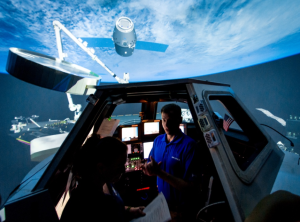
The Air Force is putting increased dollars and training hours toward ensuring its space operators are properly equipped for any future conflict in space, a service official said Nov. 2.Air Force Space Command’s biggest training shortfall is simulators, and especially simulators that can reflect more advanced, warfighting scenarios, Brig. Gen. DeAnna M. Burt, the command’s director of operations and communications, said at a breakfast event Friday on Capitol Hill.“We are continuing to try to work [on] how do we put…

 By
By 











